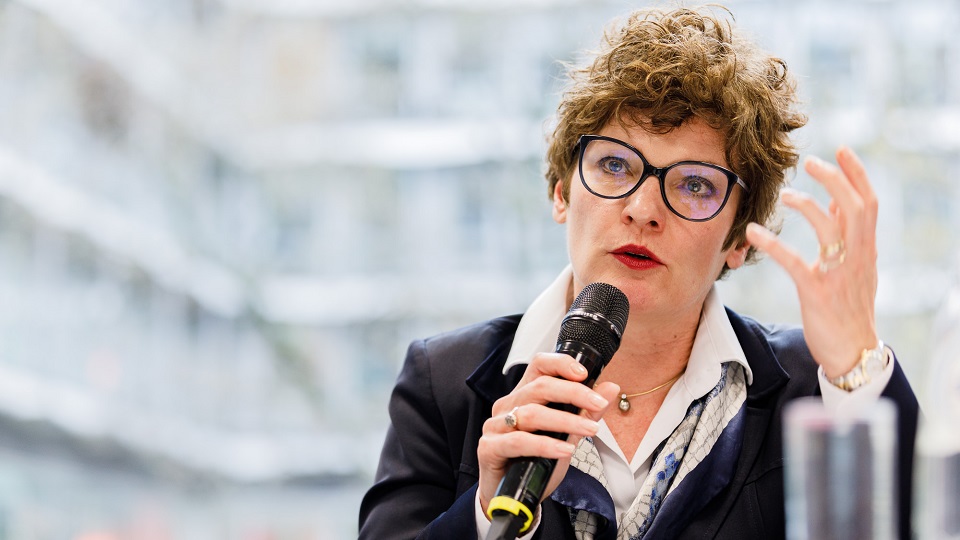EU’s common goals but clear language for China

Transparency, sustainability, level playing field, and reciprocity: these four pillars define Maja Bakran Marcich’s point of view on the cooperation between Europe-China on the New Silk Road. “If BRI respects these principles, adheres to EU and international standards, and seeks synergies with the existing EU’S transport policies and networks, then the cooperation can bring positive developments.”
Maja Bakran Marcich is the Deputy Director-General for Mobility and Transport at the European Commission. She is a speaker at the European Silk Road Summit, which takes place online on 10 and 11 November. During an extensive interview, she will highlight what has been accomplished, and remains to be done in the cooperation of the EU with China.
Trade between Europe and China is considered as a very profitable business. For Europe, China is the second-biggest trading partner, while for China, Europe is the first. This can be furtherly understood if we take a look at the profits made from trade in goods during 2019, that reach the amount of almost half a trillion euros. Three per cent of these goods were transported by rail, a comparatively small percentage, but at the same time, the fastest-growing. “A joint study on sustainable railway-based comprehensive transport corridors between the EU and China could open a further potential for rail routes”, mentioned Marcich.
Mutual respect
During the Joint Communication of March 2019, China was characterised as a “systemic rival and a strategic partner”. The specific viewpoint can define the “multifaceted relationship” between the two partners. For the EU-China transport corridors to be a source of economic growth for both partners, they need to act as “two-way streets”. Additionally, the need to facilitate “improved access for European exports into China and vice versa”, is immediate, underlined Marcich. This need does not only refer to new and improved infrastructure, but also to reciprocity in market access.
Furthermore, both sides, seem to share a mutual agreement on their objective: that is to enhance synergies between China’s Belt and Road Initiative (BRI) and the EU’s Trans-European Transport Network (TEN-T) policies. In this context, the EU can bring several benefits to the BRI: firstly, a sustainable approach to infrastructure development can mean social, economic, fiscal, and environmental sustainability. Especially fiscal sustainability would be a major EU contribution in BRI. Secondly, the EU can bring transparency, particularly in terms of public procurement. After all, Marcich added, “transparency is the number one problem that EU companies face concerning BRI related projects”.
The Deputy Director-General of DG Move also referred to the FDI (Foreign Direct Investments) screening mechanism that was activated in October 2020. “We have observed an increasing interest of China to be involved in the construction of key infrastructures, such as ports, rail and road links with hinterland”. As a result, the EU needs to ensure “that no third country takes control of critical networks”, and that the flow of foreign direct investments is consistently monitored.
COVID-19 challenges
With regards to the COVID-19 pandemic that burst out at the beginning of 2020, Marcich focused on its unprecedented social and economic impact at a global level. She also highlighted the fact that the transport industry was one of the “most heavily impacted sectors”. Nevertheless, the crisis projected the need for multilateral coordination to ensure that global transportation routes and supply chains remain open, safe and secure. “China, however, has proved to be an important partner in this case”, a fact that can be indicative of the smooth cooperation between the two sides on the New Silk Road, and a sign of the potential that this interchange can have in the future.
Do you want to hear all about the developments on the New Silk Road in 2020? On 10 and 11 November the online edition of European Silk Road Summit 2020 takes place. The impact of the pandemic, the current volumes and the forecasts for the year to come are other topics on the programme. Have a look here or register here.
You just read one of our premium articles free of charge
Want full access? Take advantage of our exclusive offer




